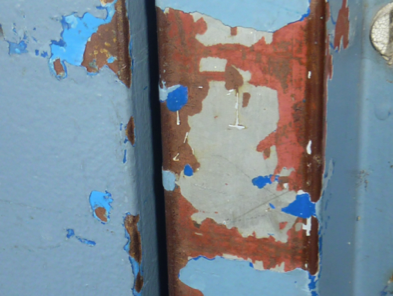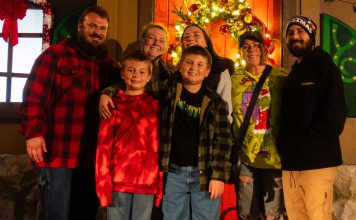In 2003, a formal district review of Gilroy High School revealed the 33-year-old campus needs $30 million in repairs and renovations.
Nine years later, that dollar amount hasn’t gotten any prettier.
Neither has GHS – a school that’s been around since 1978.
“It’s really sad. Every corner you turn, you see something that’s in need of desperate repair or in need of major aesthetics,” said Melissa Bermea, co-president of the GHS Parents Club.
Bermea said fix-it issues have been on the radar of GHS parents for years – well before the 2011 completion of Christopher High School fueled a growing sentiment that the Mustang’s campus is “inadequate.”
Seeing Christopher High get a hefty slice of the funding pie (it cost more than $111 million to construct) is just another straw compelling GHS parents to advocate for their children’s weathered place of education, Bermea said.
They might get their wish – or at least, whatever $10 million can fix.
Thursday’s Board of Education study session at district offices zeroed in on facility priorities, with staff presenting information about funds available for capital projects needed at various school sites in Gilroy. The GUSD Facilities Committee recommended $8 million be allocated to critical renovation needs at GHS.
In actuality, GUSD Superintendent Debbie Flores said the $8 million is closer to $10 million because the Facilities Committee also recommended $1.2 million be allocated for GHS science lab renovations; an amount the state has already approved to match, according to Flores.
The money will come from Measure P, the $150 million school facilities bond Gilroyans approved in November 2008.
Of the $150 million bond, there is $44 million in bond authorization for future projects left, but it might not be available until 2015. The district is anticipating other bonds it has to pay back, according to District Facilities Consultant Julie Avnit.
For now, GUSD has about $16.4 million in Measure P funds it can allocate to capital projects.
Flores said the school board will make it a priority to decide on the allotment of Measure P funds in February, hopefully.
“We’ll see how the rest of the board responds,” said GUSD Trustee Jaime Rosso, who is on the Facilities Committee, Thursday before the meeting.
The school board wants to do everything it can to support much-needed projects at GHS, he said, but when other schools have fix-it lists, too, it’s kind of like “splitting the baby when you only have so many resources.”
For some GHS parents, the decision can’t come soon enough.
“My son says, ‘Mom, I refuse to go,’” said Bermea, a parent of three who said her middle son – an eighth-grade student at Solorsano Middle School – would rather go to the brand-new CHS across town.
With her oldest child already a freshman at GHS, “we’re on board to stay with the spirit,” said Bermea. “(GHS) is our school.”
Having recently participated in a campus walk-through wherein parents, staff, students and Flores documented fix-it needs, Bermea weaves together an unattractive patchwork of issues. It’s plagued by insufficient lighting; “awful carpets;” a broken bell system “that sounds demonic;” a “pool that looks like a swamp;” a clock tower that hasn’t worked in years; a broken marquee; uneven pavement that causes students to trip; missing ceiling tiles; walls tagged with graffiti; and a whole lot of dirt that becomes a whole lot of mud when it rains, Bermea said.
“They call it ‘Lake Gilroy,’” she noted, of the school’s quad area that tends to flood thanks to an insufficient drainage system. “Come on a rainy day and bring your fishing pole,” Bermea quipped.
The GHS Parents Club compiled a comprehensive Power Point package documenting the throng of facilities issues at GHS, which they delivered to the Board of Education at Thursday’s study session. The presentation was summed into three main points, including:
n (1) It is “unacceptable” that GHS is not a safe or healthy environment for its staff and 1,450 enrolled students;
n (2) GHS is a community hub, and the campus is not a good reflection of the city’s image; and
n (3) It’s time to bridge the inequity between CHS and GHS, which is losing students and faculty members to CHS and other private schools.
True to Bermea’s account, the sideshow is a telling documentary of dilapidation: Desk veneers worn away by years of use, water-logged ceiling stains, buildings with peeling wood paneling, dirty restrooms marked by cracked tiles, broken door handles, “purple gunk” stuck to the walls in one of the foyers, leaks, cracks, rusting, sinkholes and other eyesores.
“We know,” states one slide in the Power Point presentation following the 110 or so slides of photos. “We’re speechless, too.”
Both Bermea and GHS Parent Club Co-President Kristi Holder echoed each other in emphasizing: Even without comparison to the scintillating CHS, Gilroy’s oldest high school is simply overdue for a facelift.
Still, Holder acknowledged prevalent disproportion between the two high schools.
“People come to me and say, ‘Wow, how can you send your daughter to GHS?’ There’s a lot of negative things said about Gilroy High, and for the students, parents and teachers, it deflates our spirit a bit,” said Holder, wherein she likened the campus to “an ugly duckling.”
“They have a ‘No Child Left Behind Act,’” Holder continued. “Well, this whole school is being left behind.”
The 2003 report also documents hazardous material information, citing an asbestos survey completed in 1996 that “revealed traces of asbestos in the ceiling tiles of parts of the campus.”
GUSD Facilities Director Jim Bombacci notes there has been work at GHS since 2003. During Thursday’s facilities study session, staff provided a chart demonstrating capital projects completed since 2000. Records indicate a list of eight projects at GHS, such as the brand-new Biotech Academy and a handful of other “improvements,” “modernizations” and “restorations.”
In 2004, the Gilroy Garlic Festival also funded a beautiful, brand new GHS student activity center through $250,000 in sponsor donations.
The slideshow compiled by GHS parents, however, demonstrates a lengthy to-do list still exists.
Bermea and Holder also directed attention to the fact GHS reflects the Garlic Capital as a whole. The campus is utilized by a number of local sports programs, such as CHS football games and district band competitions.
“We had some Japanese students come through here the other day,” added Bermea. “It was great to have them here, but they must have thought, ‘wow, what a place to have to migrate every day.’”
The co-presidents have a positive outlook for the future of GHS. Both noted Flores has been “highly receptive” to the concern from parent advocates.
In order to “address facility needs and equity issues,” Flores, in turn, said Thursday’s meeting isn’t the first time the school board discussed the need to allocate funds for capital projects at GHS. The topic came up during four other study sessions in 2011, she said.
“It’s time we take advantage of something if it’s there to help the school,” said Bermea on Tuesday. “It would be nice to walk on even pavement, rather than tripping over it.”














